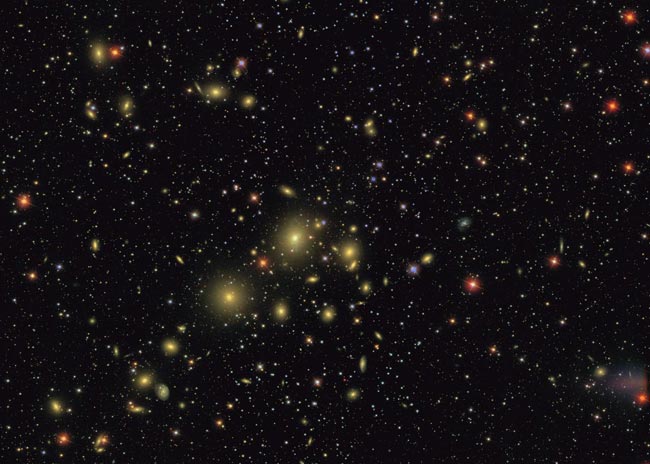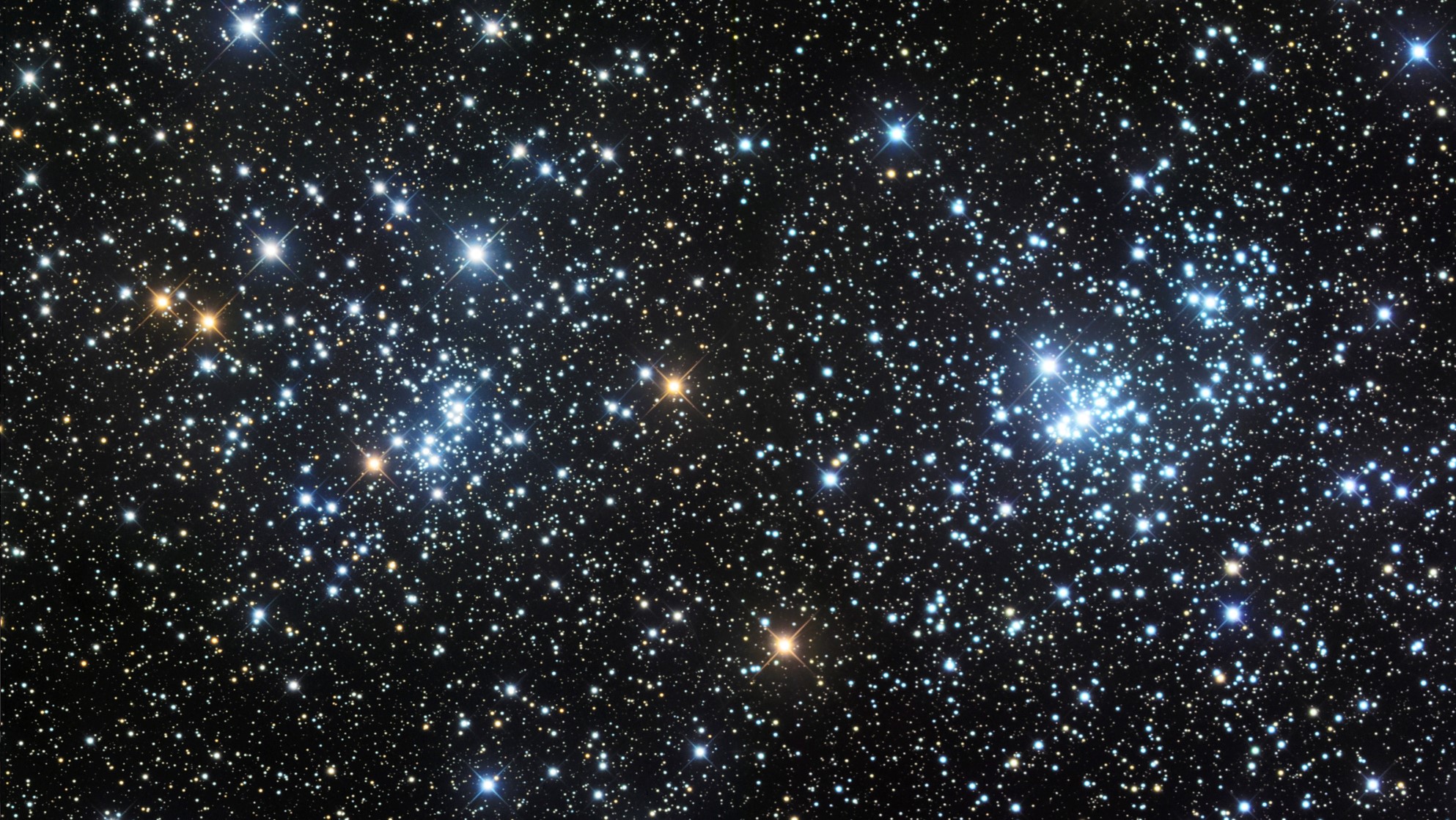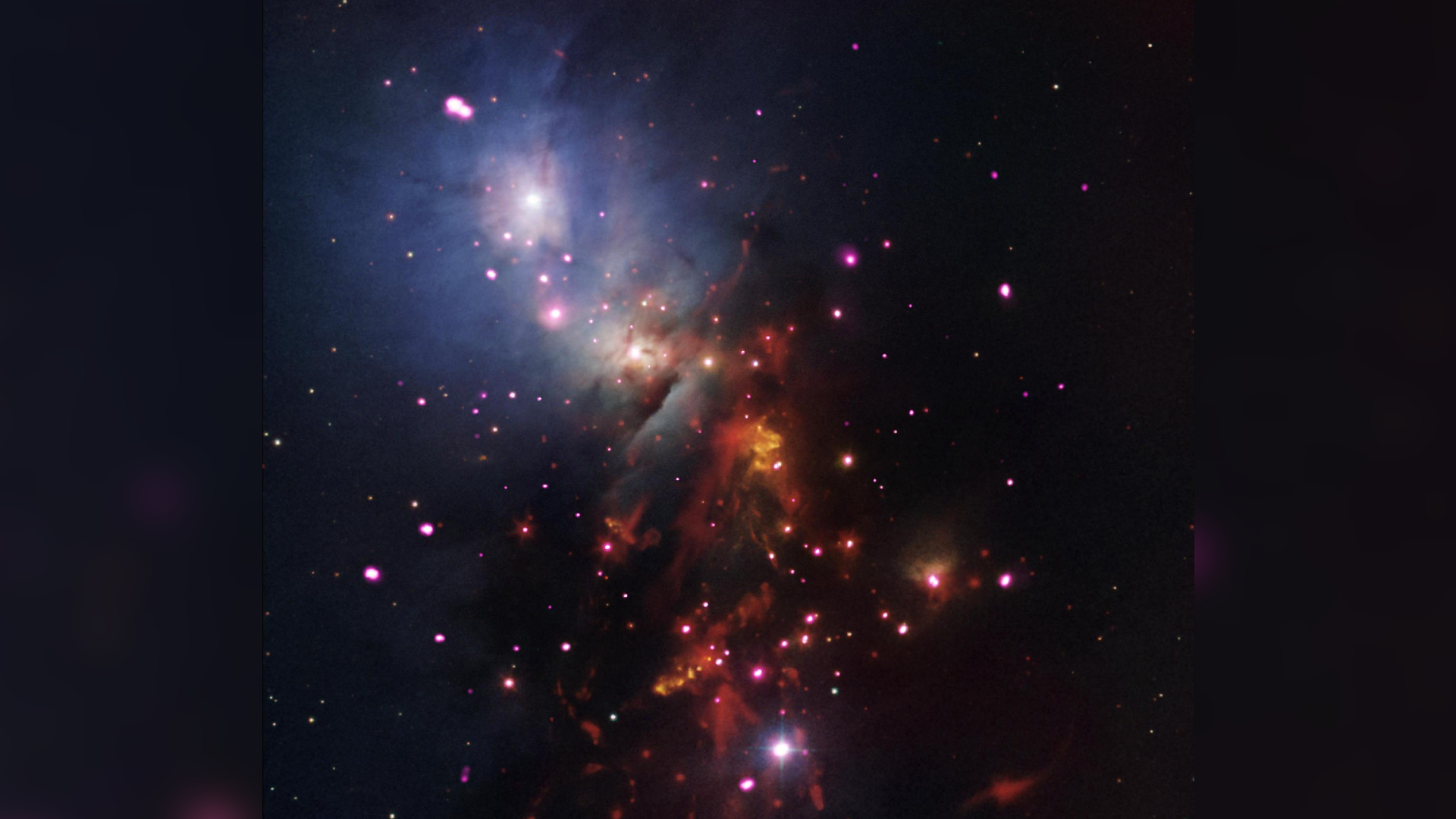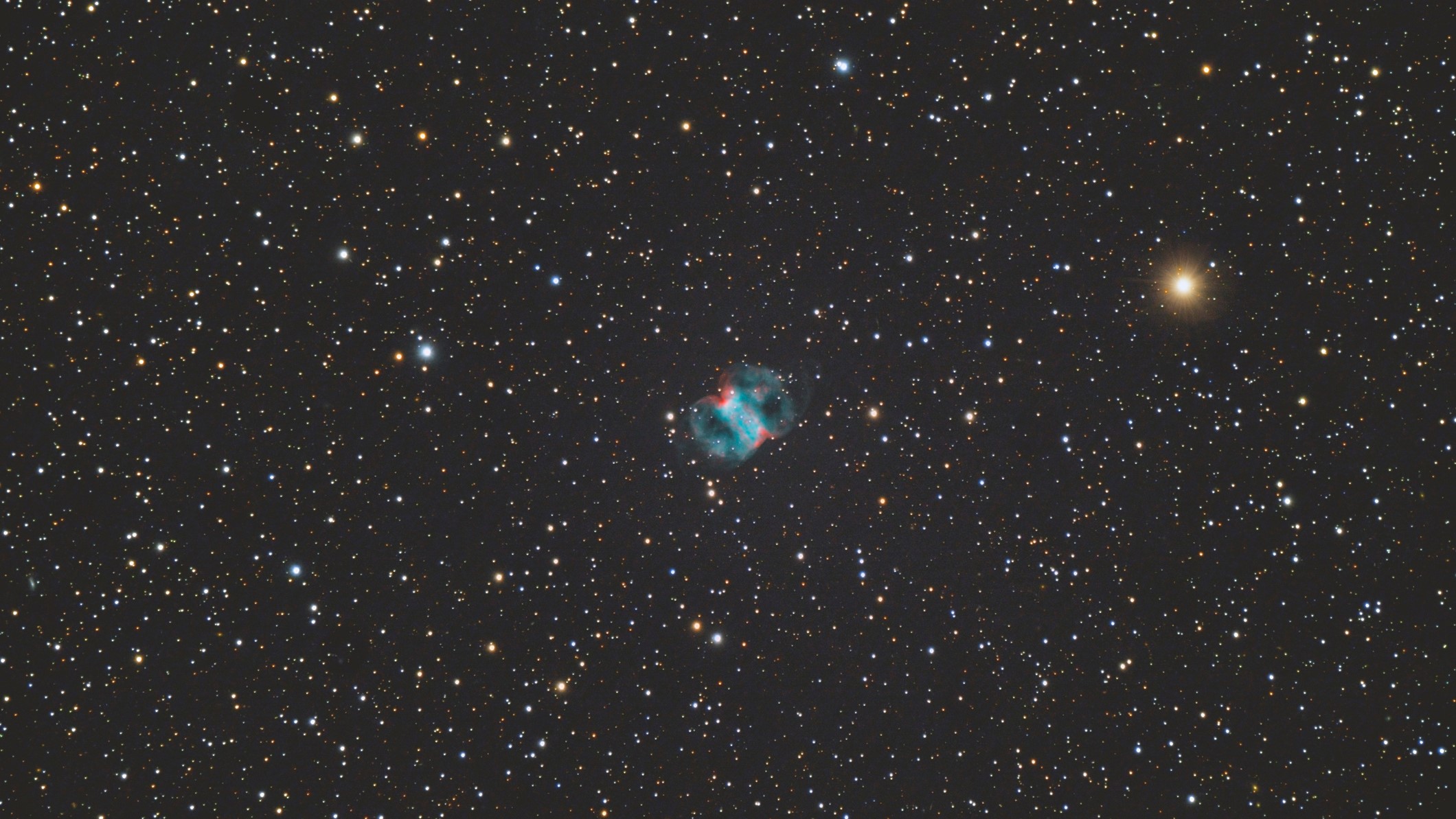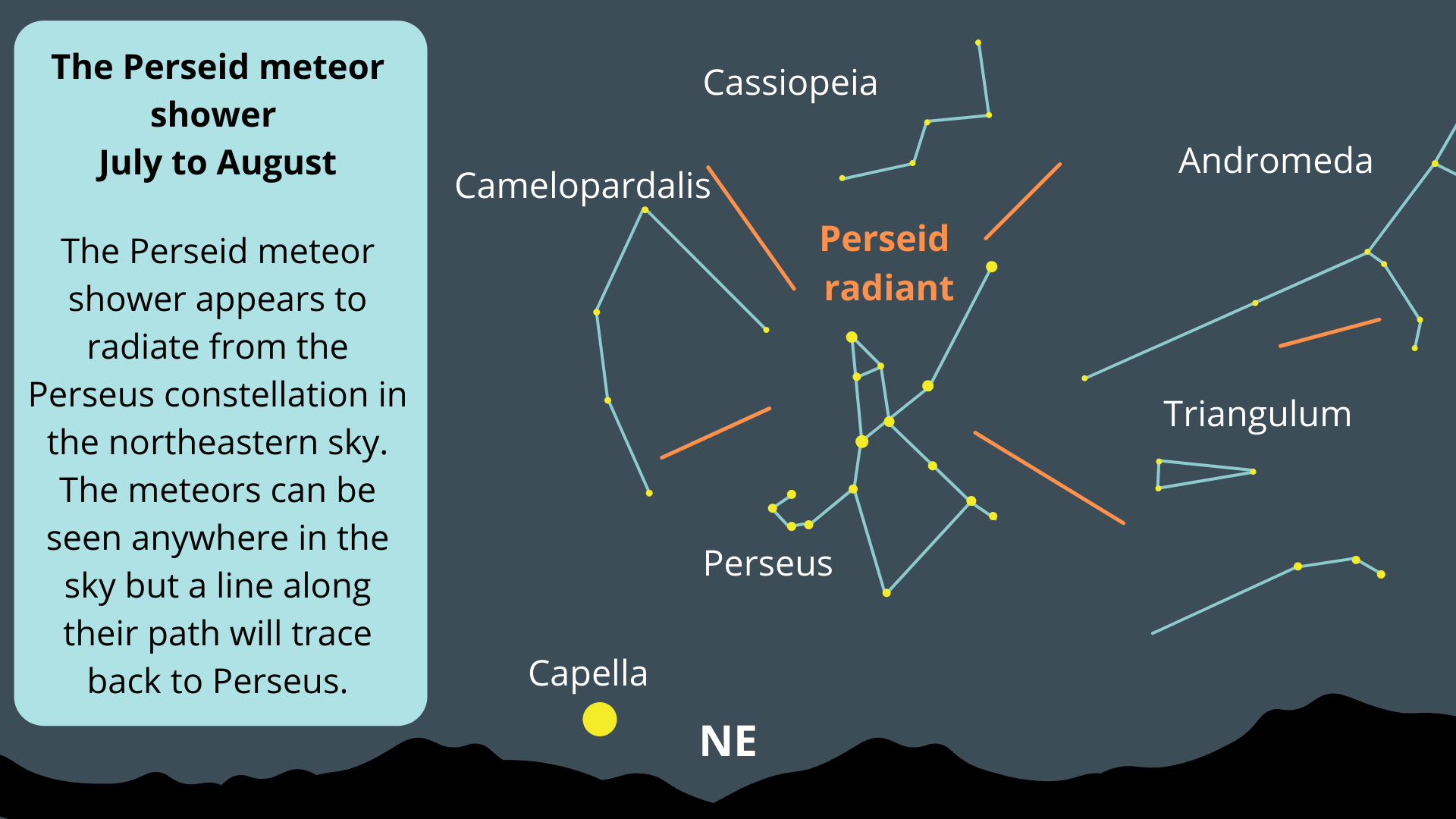Perseus constellation: Facts, location and myth
Perseus is one of Ptolemy's ancient constellations.
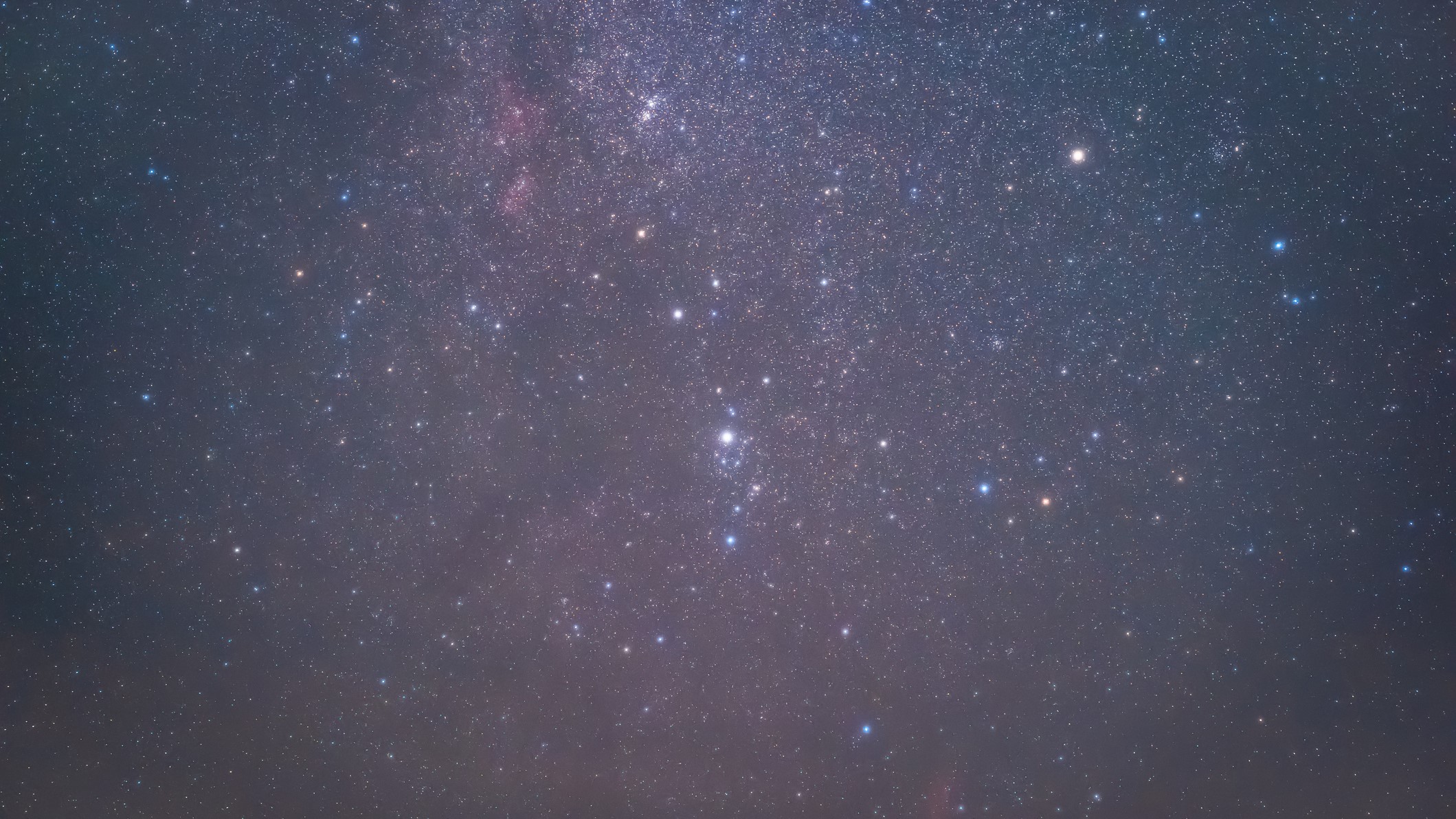
Perseus is the 24th largest constellation in the night sky and is visible across the Northern Hemisphere and parts of the Southern Hemisphere.
It has an area of approximately 615 square degrees, according to Constellation Guide. It is one of the 48 constellations cataloged by the 2nd-century astronomer Ptolemy, and it is named after the mythological Greek hero Perseus, who beheaded Medusa.
Perseus is best known as the radiant of August's Perseid meteor shower, one of the most prolific meteor showers of the year, as well as the variable star Algol, also known as the Demon Star. Algol fluctuates in brightness, appearing to "wink" in the night sky — this occurs when its two binary components eclipse one another.
Related: Night Sky: What you can see tonight (maps)
Where the Perseus constellation and when can you see it?
Perseus is located in the northern sky and is visible to most locations in the Northern Hemisphere and even some in the Southern Hemisphere.
In the Northern Hemisphere, from about 40 degrees latitude and above, the constellation is visible year-round, never setting below the horizon. Further south, it is most visible in the fall and winter, according to EarthSky, when the constellation reaches its highest point in the night sky (for the Northern Hemisphere). It has a right ascension of about four hours and a declination of 40 degrees North.
Because Perseus' stars are not so bright, the constellation is most easily spotted by looking for its neighbor, Cassiopeia, which has an easy-to-spot zig-zag shape that resembles an M or W, depending on how the constellation is oriented. If it's an M, Perseus will be below and to the right of the letter. If it's a W, it will be below and to the left. Perseus' most distinguishing feature is a curve of stars called the Segment of Perseus, which can be spotted by following the line from Cassiopeia's center star to either the bottom left star of the W or the top right star of the M, again depending on orientation.
Breaking space news, the latest updates on rocket launches, skywatching events and more!
Perseus observing targets
The Milky Way runs through Perseus, which makes the constellation a good target for stargazing — there are a number of deep-sky objects to observe here. If you're in the market for some stargazing equipment, check out our guides to the best telescopes and binoculars.
Jargon buster
Magnitude: An object's magnitude is a measure of how bright an object appears from Earth. Brightness is measured on a numbered scale, with lower numbers being brighter than higher numbers. And it even goes negative!
Right ascension (RA): Right ascension is the sky's equivalent to longitude on Earth, and it helps astronomers locate celestial objects. It covers the east-west direction and is measured in hours, minutes and seconds.
Declination (Dec): Declination also helps astronomers locate celestial objects in the sky—it is akin to latitude on Earth. It marks how high an object will rise in the sky, covering the north-south direction in units of degrees, arcminutes and arcseconds (60 arcseconds in an arcmin, 60 arcmins in a degree).
Double Cluster
Magnitude: 4.3
Approximate distance from Earth: 7,600 and 6,800 light-years (NGC 844 and NGC 869, respectively)
Location: 2h 20m (right ascension), +57°08' (declination)
The Double Cluster comprises two open clusters, NG869 and NG844, of more than 300 supergiant stars each. The two celestial objects are fairly bright and can be seen through binoculars, according to Constellation Guide. Though they appear side by side, they're actually 800 light-years apart.
NGC 1333
Magnitude: 5.6
Approximate distance from Earth: 960 light-years
Location: 3h 29m 11s (right ascension), +31°18'36" (declination)
NGC 133 is a nebula within the Perseus Molecular Cloud, a region of gas and dust filled with young stars, according to NASA. More specifically, it's a reflection nebula, which means its dust clouds reflect the light of nearby stars.
Little Dumbbell Nebula (Messier 76)
Magnitude: 10.1
Approximate distance from Earth: 2,500 light-years
Location: 1h 45m 24s (right ascension), +51°34'31" (declination)
Messier 76, also known as the Little Dumbbell Nebula, is, in fact, a nebula that looks like a little dumbbell—it's likely two nebulas with connecting components. The nebula is a planetary nebula, which means its clouds of dust and gas formed around a dying star.
NGC 1260
Magnitude: 14.2
Approximate distance from Earth: 240 million light-years
Location: 13h 17m 22s (right ascension), +41°24'19" (declination)
This lenticular galaxy was the site of supernova SN 2006gy, which, per NASA, was the brightest supernova ever discovered when it was first spotted in 2006.
The Perseid meteor shower
Though the Perseid meteor shower's true origins are the debris trail of Comet 109P/Swift-Tuttle, the meteors appear to radiate from the Perseus constellation. The Perseids run from July 14 through Sept. 1, with a peak between Aug. 11 and 13. During the peak, you might be able to see up to 100 meteors per hour as they zip across the sky at 37 miles per second. The meteor shower is also known for producing fireballs, which are exceptionally bright meteors.
Perseus mythology
Perseus was a Greek hero, a demigod born of Zeus and Danae. According to GreekMythology.com, Perseus was tasked by the Greek king Polydectes to fetch the head of Medusa, the only mortal Gorgon. The gorgons were a trio of sisters with snakes for hair, whose gaze turned men to stone. Polydectes gave Perseus this task with the hope it would kill him, allowing Polydectes to forcibly marry Danae, who had rejected his advances.
As Perseus set out on his journey, he was graced by the goddess Athena and the god Hermes, who instructed him to find the Graeae, three other sisters of the Gorgons. By blackmailing the Graeae, Perseus learned the location of the Gorgons and successfully slayed Medusa by beheading her. The shape of the constellation Perseus represents the hero holding her head. Returning home, Perseus discovered Polydectes' ploy and used the head of Medusa to turn him to stone.
The legend has many tie-ins to Perseus' neighboring constellations Andromeda, Cepheus, Cassiopeia, Cetus and Pegasus. On his journey home after slaying Medusa, Perseus saved Andromeda, the daughter of Cassiopeia and Cephus, from being sacrificed to the sea monster Cetus. He later married Andromeda, and the two constellations named for the pair are next to each other in the sky. Perseus is also involved with the origin story of Pegasus, the winged horse — Pegasus emerged from Medusa's body after Perseus beheaded her.
Perseus constellation FAQs answered by an expert
We asked Mike Reed, an astronomer and a distinguished professor in the Department of Physics, Astronomy and Materials at Missouri State University, a few frequently asked questions about the Perseus constellation.

Distinguished Professor in the Department of Physics, Astronomy and Materials at Missouri State University
Where is the Perseus constellation?
In the sky, of course! Right now [early May 2023], it sets quite early, so in the evening, it is in the northwest. Roughly between Venus (this week, but not after) and the North Pole. It is pretty much set (below the horizon) by 10 p.m.
How can I find the Perseus constellation?
If you can see the Little Dipper, then the portion nearest the bowl points toward it. Or, if you know the W of Cassiopeia, it is roughly behind the W.
How many stars are in the Perseus constellation?
That is a very difficult question. It varies a lot depending on how dark your skies are and if you are just using your eyes or if you have binoculars or a telescope. It is in the plane of our galaxy, the Milky Way, so Hubble or James Webb space telescopes would see billions of stars. The main 'shape' of the constellation has about 10 stars, but at a dark site, you should be able to see 20 to 30 stars.
Additional resources
See a visualization of the giant wave rippling through the Perseus galaxy cluster, courtesy of NASA's Goddard Spaceflight Center. Learn about the myth of Perseus in this video by the Lowell Observatory. Watch the Perseid meteor shower from Joshua Tree National Park, as filmed by The Guardian.
Bibliography
Ford, D. The Constellation Perseus. In the Sky. Retrieved May 19, 2023, from https://in-the-sky.org/data/constellation.php?id=64
Mcclure, B. and Byrd, D. Cassiopeia and Perseus on October evenings. Earth Sky. Retrieved May 19, 2023, from https://earthsky.org/constellations/cassiopeia-and-perseus-in-northeast-on-october-evenings/
Messier 76. NASA. Retrieved May 19, 2023, from https://www.nasa.gov/feature/goddard/2018/messier-76
NGC 1333. NASA Hubblesite. Retrieved May 19, 2023, from https://hubblesite.org/contents/media/images/2023/012/01GWQFKJJE8VR2XVC09G43E9FR
Perseids. NASA. Retrieved May 19, 2023, from https://solarsystem.nasa.gov/asteroids-comets-and-meteors/meteors-and-meteorites/perseids/in-depth/
Perseus. Britannica. Retrieved May 19, 2023, from https://www.britannica.com/place/Perseus-constellation
Perseus Constellation. Constellation Guide. Retrieved May 19, 2023, from https://www.constellation-guide.com/constellation-list/perseus-constellation/
Perseus: The Slayer of Medusa. Greek Mythology. Retrieved May 19, 2023, from https://www.greekmythology.com/Myths/Heroes/Perseus/perseus.html
The Brightest Supernova Ever. NASA. Retrieved May 19, 2023, from https://science.nasa.gov/science-news/science-at-nasa/2007/07may_bigsupernova

Space.com contributing writer Stefanie Waldek is a self-taught space nerd and aviation geek who is passionate about all things spaceflight and astronomy. With a background in travel and design journalism, as well as a Bachelor of Arts degree from New York University, she specializes in the budding space tourism industry and Earth-based astrotourism. In her free time, you can find her watching rocket launches or looking up at the stars, wondering what is out there. Learn more about her work at www.stefaniewaldek.com.
